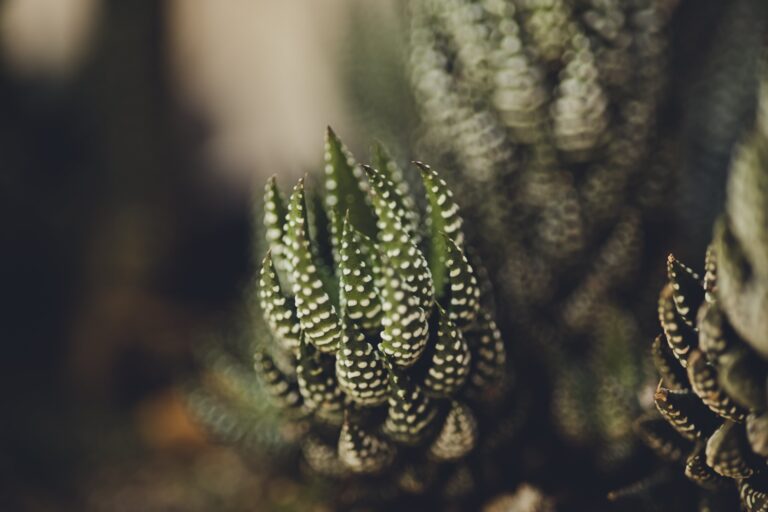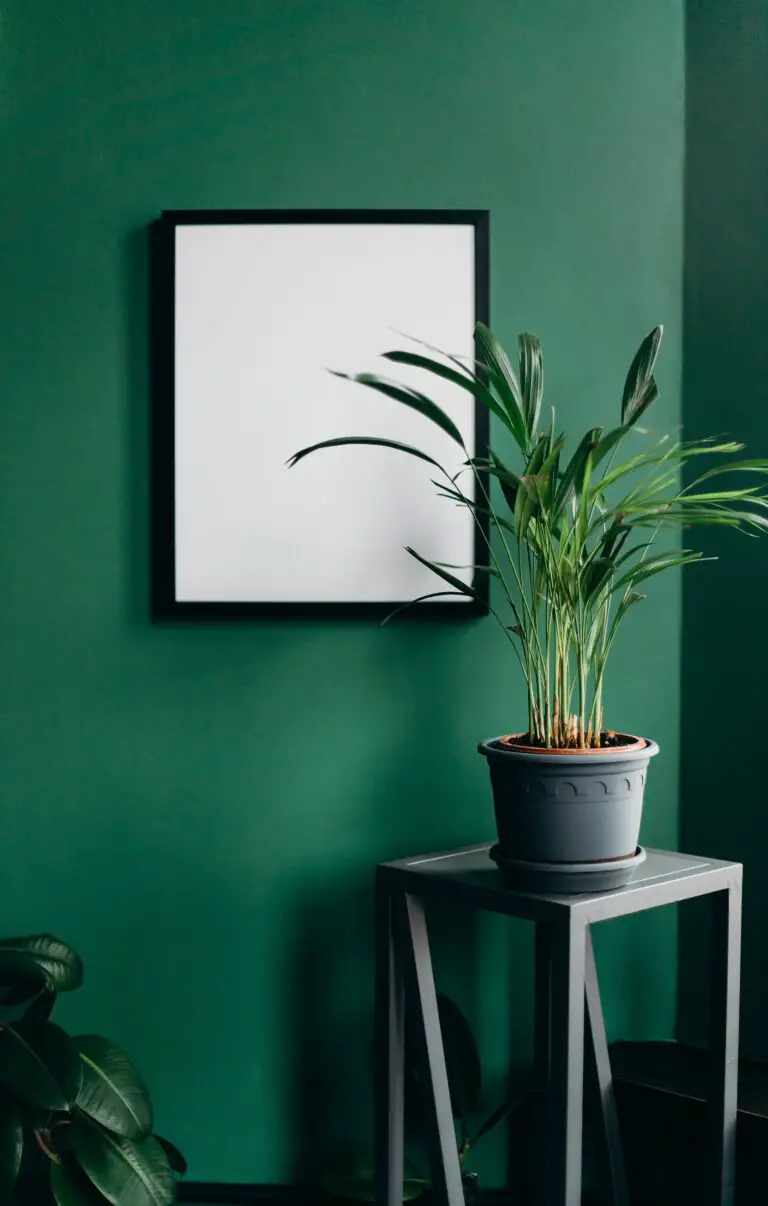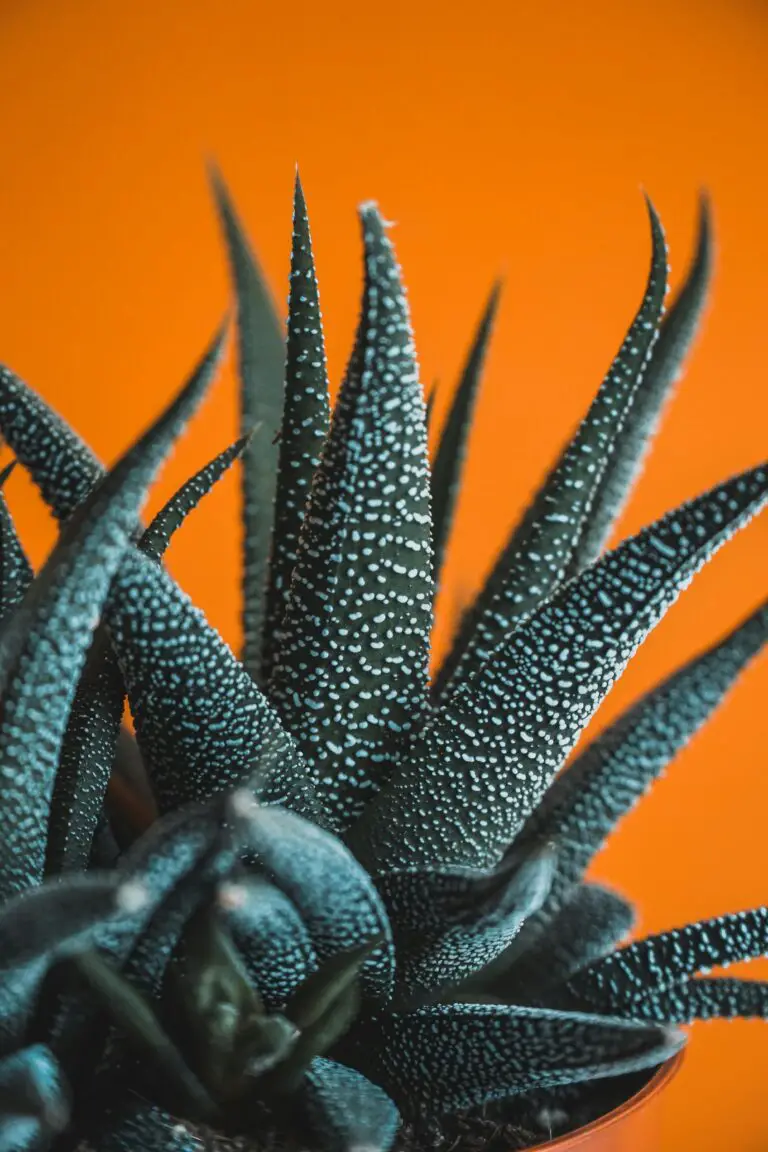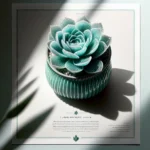Discovering Haworthia Cuspidata
If you’re looking to add a touch of extraordinary beauty to your windowsill, let me introduce you to a succulent that’s as enchanting as it is easy to care for—it’s more than just a plant; it’s a living gem with translucent leaves that sparkle like tiny stars. Meet Haworthia cuspidata, the star window plant. Originating from the rolling plains of South Africa, this succulent has captivated the hearts of indoor gardeners across the globe.
Picture this: a cluster of plump, pointed leaves, each one finely articulated with delicate patterns like the fingerprints of Mother Nature. These leaves are not solely for show; they are masterfully designed to withstand the harsh rays of the sun, casting a soft glow inside the plant’s core. This is why the Haworthia cuspidata has earned the name “star window plant.” Its leaves act as natural solar panels, encouraging photosynthesis even in low-light conditions, making it a favorite among those seeking an easy-care houseplant.
Thinking of elevating your home décor with these beauties? Whether nestled in a group among a sea of succulents or standing solo, the Haworthia cuspidata adapts and thrives. It’s a plant for seasoned collectors and novices alike, relishing in the simple pleasures of bright, indirect sunlight and sparse watering—a testament to its forgiving nature. Not only is it a visual delight, but its hardy disposition ensures that even the most forgetful gardener can cultivate a flourishing specimen.
Let’s be real, who wouldn’t admire this plucky little plant that perseveres, requiring minimal fuss yet offering maximum reward? For anyone looking to dive into the world of succulents, there’s no better starting point than with the resilient and charming Haworthia cuspidata. Embrace the joy of growing your own star window plant and witness how it brings a slice of the exotic right into your living space. For a closer look at how to nurture your very own, check out this insightful video:
Whether you’re an aspiring green thumb or an experienced gardener, the world of succulents opens up endless possibilities. For example, take a peek at our guide on succulent care, which offers comprehensive insights into cultivating your own succulent oasis. It’s time to embark on a botanical journey with Haworthia cuspidata leading the way.
Ideal Environments for Star Window Plants
Welcome, fellow green thumbs and succulent seekers! If you’ve ventured into the realm of cultivating the Haworthia cuspidata, affectionately dubbed the ‘Star Window Plant’, then you’re in for a delightful escapade. This gem of a plant, with its plump, translucent leaves and rosette pattern, transforms little corners of your home into showcases of natural art. However, just like any other superstars, they have their preferences and needs when it comes to their environment. Let’s decipher the code to creating a haven for these succulent beauties!
Luminous Life: The Light Factor
Imagine your Star Window Plant basking near a window, as if it’s catching rays of sunlight like soft whispers of energy—not too loud, just a gentle conversation. Ideally, these plants revel in bright, indirect light. Direct sunlight? A definite faux pas for our starry succulents! It can scorch their delicate leaves which are designed to filter and soften light, not withstand the fiery gaze of the sun’s full strength. Keeping them in a spot where they can enjoy the morning or late afternoon sun, with a sheer curtain as a shield, is the perfect setting for a light-loving performance.
Need inspiration on how to illuminate your Star Window Plant’s world? Check out this care video, which not only sheds light on their preferred rays but also their overall pampering essentials.
Keeping It Cool: Temperature Talks
Next on the agenda is setting the stage with the right temperature. Haworthia cuspidata adores a climate akin to a mild spring morning, consistently cozy and never too harsh. They thrive in temperatures between 15 and 26 degrees Celsius (59 and 78 degrees Fahrenheit). When summer turns up the heat, they demand an encore of cooler evenings. And as winter seeks to steal the show, we must protect our green cast from freezing temps—they’re not a fan of the frosty finale.
Ever wondered how to mimic the perfect climate indoors for your Haworthia cuspidata? If you’re stumped, explore our in-depth guide to indoor succulent plant care for some pro tips that’ll save the day!
The Humidity Factor: Not Too Steamy, Please
Finally, let’s talk about the air in which the Star Window Plant breathes—humidity. Too much moisture in the air, and our star’s performance gets misty and unclear. These succulents are pros at water conservation, so a drier climate is where they hit the high notes. Keep the humidity levels moderate to mimic their native South African home—a venue of dry air with occasional bursts of freshness. They can handle a bit of the spotlight’s dew, but a constant, steamy atmosphere is more tragedy than triumph.
For those keen to provide the best stage for Haworthia cuspidata’s grand act, considering the trifecta of light, temperature, and humidity will set you on the path to success. Embrace these elements, and you might just find your windowsill or tabletop transformed into a theatre of verdant vitality. And remember, should you want to delve further into the succulent script, check out our Ultimate Guide to Succulent Care for all the behind-the-scenes tips!
Mastering the Art of Cuspidata Care
Let’s dive right into the wonderful world of cultivating Haworthia cuspidata, where care is an art form and each plant is a unique masterpiece. Nicknamed the “Star Window Plant” for its translucent fleshy leaves, this beauty can thrive under your tender care if you treat it right.
The Secret to Quenching Thirst: Watering Routines
First things first, the watering routine: your Haworthia cuspidata isn’t a camel, but it sure doesn’t need a deluge. It’s like making the perfect cocktail – balance is key. Too dry, and the leaves start wilting like a sadly deflated balloon. Too wet, and the roots might rot faster than an apple forgotten at the bottom of your backpack. I recommend a “soak and dry” method: water thoroughly, then let the soil completely dry out before the next watering. It’s a plant, not a fish, so don’t let it swim!
Building the Foundation: Soil Recommendations
On to the foundation of success: the soil. You wouldn’t build a castle on quicksand, and you shouldn’t plant your Haworthia cuspidata in dense, wet soil. Think light, airy, and well-draining – like the soil equivalent of a cloud. You can mix in sand or perlite for extra drainage. It’s like setting up a five-star hotel for roots; make sure that room has good drainage and they’ll send you thank you notes in the form of robust growth.
If you want to delve even deeper into the succulent universe, check out The Ultimate Guide to Succulent Care that will shed light on creating the perfect conditions for your green buddies.
Feeding the Star: Fertilization Tactics
The feeding frenzy is quite simple: it’s all about the quality and not the quantity. Haworthia cuspidata likes its meals nutrient-rich but infrequent, kind of like a gourmet snack. During the growing season (spring and summer), a half-strength succulent fertilizer once a month will do the trick. It’s similar to sprinkling a little parmesan on a pasta dish – not too much, just enough to enhance the flavor, or in this case, growth.
Check out this enlightening video that goes into detail about all things Haworthia care—your Star Window Plant will thank you for it!
A Cautionary Tale: Common Care Pitfalls
Now, let’s talk about the care pitfalls, the ones that make you facepalm and think, “If only I knew!” Sunburn is a real thing for these dainty lovelies. They love bright light but direct scorching afternoon sun can turn them pink, like a tourist at the beach without sunscreen. Keep them in a spot where the lighting is like a gentle morning hug rather than a blazing midday interrogation. Also, be cautious with cold drafts or temperatures dropping faster than a hot potato – Haworthia cuspidata fancies staying warm and cozy.
Ultimately, each Haworthia cuspidata is a story waiting to unfold under your care. Like a bonsai shaping or a sourdough starter, it becomes personal. You’ll start detecting its needs, the subtleties of its leaves, the rhythm of its growth. Grow it with love, patience, and a little succulent savoir-faire, and it will soon become the crowning jewel of your indoor garden tableau.
Propagation Perfection: Multiplying Your Haworthia
Have you ever marveled at the exquisite beauty of a Haworthia cuspidata and wished you could cultivate a constellation of these star window plants at home? Good news, plant enthusiasts! Propagation of Haworthia cuspidata is not just a dream – it’s an easily attainable reality, provided you follow some straightforward steps. Let’s explore how you can multiply your beloved succulent through the wonders of offsets and seeds.
Growing Pains: A Tale of Offsets
Emerging from beneath the mother plant, like stars slowly appearing in the dusk sky, offsets are your ticket to expanding your Haworthia haven. Once your Haworthia cuspidata begins to mature, you’ll notice these tiny replicas vying for their spot in the sun. Carefully snip them off with a clean, sharp blade, ensuring each offset has some roots attached. Plant them in a well-draining cactus mix, similar to the cosmic blend their parent thrives in, and monitor their journey to becoming independent Haworthia constellations in their own pots.
Picture it: A cluster of Haworthia cuspidata, each offset a mirror to its progenitor, taking root and forming a delicate green nebula on your windowsill. The anticipation of watching each one unfurl and develop its own translucent windows is akin to watching a celestial event unfold before your very eyes.

The Seed Route: Patience Prevails
Embarking on the seed journey with Haworthia cuspidata is akin to nurturing a star from a nebula. It begins with pollination – an infrequent event that requires the cosmic alignment of flowering in your succulents. Once the flowers have been pollinated, either by the serendipitous touch of a pollinator or by your own hand, they will give rise to seeds that hold the potential to become your very own galaxy of plants.
With seeds as fine as stardust, sow them atop a bed of moist, sandy soil, barely covering them – if at all – and let the warmth and light of your own indoor sun coax them into life. As weeks pass, and with the right balance of moisture and air, you’ll witness the miracle of life as tiny green shoots push through the cosmic soil, reaching for the stars.
Remember, whether you choose the path of offsets or the slow yet rewarding route of seeds, the cultivation of Haworthia cuspidata is an exercise in patience and care. Each new plantlet, no matter its origin, carries the magic of its parent, allowing you to foster a constellation of these fascinating succulents right in your own home.
Troubleshooting Common Haworthia Issues
Haworthia cuspidata, also known as the Star Window Plant, is favored by both novice and experienced succulent enthusiasts for its ease of care and its splendid star-like foliage. However, even the most experienced green thumbs can encounter a few bumps on the road to thriving Haworthias. Let’s get our hands dirty and dive into some real-life snags you might face in your horticultural journey with Haworthia cuspidata.
Armored Against Pests – Sort Of
Picture this: you’re admiring your succulent collection when you spot something amiss on your Haworthia cuspidata. Tiny pests like aphids or mealybugs can treat your plant like a five-star resort. But before you panic, your plan of attack is simple. Use a soft brush dipped in rubbing alcohol to gently evict these uninvited guests. Consistent vigilance will help you spot these critters early, ensuring your plant’s quick recovery.
When Disease Strikes: A Survival Guide
You’ve noticed your ordinarily robust Haworthia starting to wither or develop unsightly spots. Diseases such as root rot or fungal infections might be the culprits. Ensuring good air circulation and avoiding overwatering are key, but should your plant fall victim to these issues, removing the affected parts and treating it with a fungicide is your best countermeasure. Remember, prevention is always easier than cure. Give your plant a fighting chance by providing a well-draining potting mix and clean, sterilized tools during maintenance.
The Effects of Environmental Stress
Even plants get stressed, and your Haworthia cuspidata is no exception. Environmental stressors like extreme temperatures, inadequate lighting, or incorrect watering can leave your plant looking less than stellar. If your Haworthia is stretching or its vibrant green is fading, reassess its environment. It might be yearning for a sunny spot with indirect light or craving more consistent watering. Tailoring your care to its needs will swiftly return your Haworthia to its healthy, windowed glory.
Here’s a handy video that delves into why your Haworthia might be stretching and how to nip this problem in the bud:
Encountering problems with your Star Window Plant can feel disheartening, but with these troubleshooting tips, you’re well-equipped to handle common Haworthia hiccups. By staying observant and responsive, you can ensure that your Haworthia cuspidata continues to be the shining star of your succulent collection.
Accessorizing Your Space with Haworthia
Imagine your home space infused with the delicate charm of Haworthia cuspidata, the Star Window Plant. This little succulent, with its see-through tips and rosette form, can be the star player in your decor lineup. Whether it’s a cozy corner that needs a touch of green, or a full-blown terrarium project you’re embarking on, Haworthia cuspidata thrives with minimal fuss. It’s time to unlock the potential of these succulent stars and turn your home into a showcase of natural art.
Seamless Integration into Home Decor
Engage your creative spirit and picture Haworthia cuspidata as more than just a plant—it’s a living accessory. Think whimsically decorated floating shelves with a cascade of green rosettes, each plant nestling comfortably in its uniquely chosen pot. Or, for a touch of living elegance, why not place a sleek, glass terrarium on your coffee table? With a bed of white sand, a couple of Star Window Plants, and some well-placed stones, it can become a conversation piece that radiates tranquility.
But the excitement doesn’t end at static displays! Get inspired by integrating Haworthia cuspidata into dynamic areas of your home. Use them as organic bookends on a bookshelf, allowing their pointed leaves to reach out like natural markers for your favorite reads. Or place them in a sunny bathroom window, where they’ll create a serene Zen garden vibe while loving the extra humidity from your morning shower.
Mixed Succulent Arrangements
Up your indoor gardening game by pairing your Star Window Plant with a cast of succulent companions. Imagine a shallow, wide-mouth bowl on your dining table, where Haworthia cuspidata plays the leading role amid a drama of succulent varieties. Add the rosy hues of Echeveria, the striking vertical lines of Aloe, and the plump beads of Sedum morganianum to frame your Haworthia’s translucent beauty. It’s not just a planter; it’s a living sculpture that brings the room to life!
And let’s not forget vertical spaces. Create a stunning green wall by lining up small pots of Haworthia cuspidata amidst other drought-resilient treasures. The contrast of textures and forms will delight the eye, turning an empty wall into a lush tapestry of succulent variety. Who needs wallpaper when you have a garden you can touch, and better yet—a garden that only asks for water when the soil feels dry to the touch?
There’s also scope for interactive decor. Think of a mobile or hanging installation where potted Haworthias suspend from the ceiling, moving gently with the air. The shadows cast, the subtle shift of the plants throughout the day—this is decor with a life of its own, bringing dynamic energy into any room.
Accessorizing with Haworthia cuspidata isn’t merely about the beautification of your home—it’s about creating experiences and crafting stories around your passion for succulents. Whether it’s through a standalone display or an elaborate succulent arrangement, this versatile plant offers endless possibilities to enhance your living space, all the while staying marvelously low-maintenance. The Star Window Plant is ready to shine in your home—are you ready to make it a star?
The Impact of Pots and Planters on Haworthia Cuspidata
Imagine this: you’ve just acquired a shiny, new Haworthia cuspidata, also known as the Star Window Plant, and you’re about to make a crucial decision that affects its future growth and health. The choice of pot, an often-overlooked aspect of plant care, is like picking a home for your new little friend. Get it right, and your plant will prosper, showcasing its translucent foliage in all its glory. Get it wrong, and you might as well be setting it up for a series of botanical challenges.
Why is the choice of container so critical for the well-being of your Haworthia cuspidata? Well, it’s all about the roots. These succulents need a well-draining home that mimics their natural arid habitats. Too much moisture trapped in a poorly draining pot spells disaster, paving the way for root rot and other nasty issues. On the other hand, a pot that’s too large for a small haworthia can hold excessive soil that retains unnecessary water, compounding the problem.
Let’s talk pot materials. You could go for the classic terracotta pot, which is porous and allows the soil to breathe, reducing the risk of waterlogging. Or, perhaps a plastic pot with plenty of drainage holes, making it lightweight and easy to handle. But, remember, this isn’t just about functionality; it’s about style, too. Your choice reflects the look you aim to achieve, whether it be a rustic charm with clay or a sleek modern vibe with a geometric planter.

When it comes to size, think “cozy but comfortable.” A pot that’s just right encourages healthy growth without leaving excess soil to stay wet and cold. A general rule of thumb is to choose a pot that’s about one-third larger than the plant’s root ball, giving it enough space to spread out without drowning in extra soil. Remember that your Haworthia cuspidata will grow at its own pace, and that just-right pot now can turn into the too-tight pot later. Keep an eye out, and be ready to upsize responsibly.
Let’s talk real-life scenarios; we’ve all seen a friend’s houseplant looking miserable in a colossal pot, its vibrant spirit lost in the vastness. Or perhaps you’ve spied a proud specimen in a pot that complements its size and shape perfectly, the plant radiating happiness. These aren’t just coincidences; they’re the result of thoughtful consideration of how the right pot influences the plant’s lifestyle.
Choosing the perfect pot for your Haworthia cuspidata is much like choosing a house that turns into a loving home. It’s about protection, enabling growth, and providing a foundation for future flourishing. So next time you’re pot shopping, keep the distinct needs of your Star Window Plant in mind. Strike a balance between practicality and aesthetics, and you’ll pave the way for a little green marvel that’s both healthy and heartwarming.
FAQs About Haworthia Cuspidata Care
Got a Haworthia cuspidata that isn’t looking as stellar as usual? Don’t fret! These delightful succulents, with their translucent “star windows,” are tougher than they appear. Let’s untangle some common care queries so your little star can keep shining bright.
Do I need a green thumb to keep Haworthia cuspidata thriving?
Far from it! Even if you’re more of a plant admirer than a plant whisperer, Haworthia cuspidata is forgiving. Water it sparingly, avoid the midday sun, and give it well-draining soil. A little neglect isn’t going to make it give up the ghost.

How often should I water my Haworthia cuspidata?
Imagine you’re in its native South African roots—dry and arid. Mimic that by letting the soil dry out completely before giving it a drink. Stick your finger in the soil; if it feels like a parched desert, it’s time to quench its thirst. Overwatering? Now that’s the real plant-killer.
Does it need the sunniest spot in my home?
Think of it like a sunbather with sensitive skin—it loves light but needs protection from scorching rays. An east or west-facing window draped with sheer curtains strikes the perfect balance for your translucent-topped friend.
My plant looks unhappy, could it be the soil?
Absolutely. Poor soil is like a bad mattress—it can cause all sorts of issues. Give Haworthia cuspidata a comfortable bed with a gritty, well-draining mix and it’ll sleep like a baby. Compacted, wet soils? That’s a one-way ticket to root rot city.
Can I propagate this little gem?
Propagation is like plant magic, and luckily, Haworthia cuspidata loves to put on a show! Offshoots will pop up around the mother plant. Simply separate these mini-me’s when they’re big enough, and you’ve got an encore performance!
It’s looking a bit yellow—what’s up?
Yellow leaves can be a cry for help—a sign it’s been waterlogged or sunburned. Dial back on H2O and relocate to a less intense light. Remember, it’s a succulent, not a cactus; treat it to moderate conditions and it’ll bounce back.
From watering woes to sunlight snafus, now you’ve got the insider knowledge to keep your Haworthia cuspidata in star-studded shape. Keep these tips in your back pocket, and you’re all set to be a succulent superstar!



